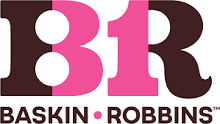What’s Your Flavor…
Imagine it is a hot day. You are hanging out with a friend on the beach. And it is real hot…
You want to cool down and you see one of those ice cream carts. The type that is a buck for a small soft service cone - vanilla, chocolate, or swirl.
You waltz up to the cart and choose swirl. Your friend chooses vanilla (they were always a little off but that’s ok).
The nice man hands you your cones, and you both enjoy the hell out of that ice cream. It’s a nice little treat on a hot summer day.
Now, let’s switch things up…
You waltz up to the cart and its actually a Baskin Robbins ice cream cart… and the nice man asks you which one of the 31 flavors you’d like.
Well now we have some work to do.
You look at the menu, mentally comparing each one, which one fits your mood right now. After 5 minutes standing there under the hot the sun, you choose Gooseberry Choco Unicorn Surprise. Your friend chooses vanilla.
You and your friend leave and are eating the ice cream. You start to wonder if you should have gotten the Strawberry Cheesecake instead. Or the Peanut Butter Cup…
Your friend is just enjoying their vanilla and looking much more sane.
This is the Paradox of Choice.
And I assure you it relates to CRO.
But first…
The Paradox of Choice
This idea was made popular by the psychologist Barry Schwartz in his book, The Paradox of Choice: Why More is Less, in 2004.
According to Schwartz, we think that having more choices is better. After all, it gives us the freedom to choose what bests fits our need or desire.
But it doesn’t work out that way. In his studies, he found 2 effects that come from having an overabundance of choice:
One effect is that it produces paralysis rather than liberation - with so many options to choose from, people find it very difficult to choose at all.
One second effect, is that even if we manage to overcome the paralysis and make a choice, we end up less satisfied with the result of the choice than we would be if we had fewer options to choose from.
-It is easy to imagine that you could have made a different choice that would have been better. this induces regret
-it is easy to imagine the attractive features of alternatives that you reject that make you less satisfied with the alternative that you’ve chosen
You can watch the full video here.
Decision Paralysis
In one famous Jam Study, there was a stand selling jam. For one group, there were 6 flavors. In the other, there were 24 flavors. And the group that had only 6 to choose from were 10x more likely to make a purchase than the group that had 24 to choose from.
When we have too many options, our brains have to work a lot harder to make a choice. We are anxious that we’ll make the wrong choice and regret it. It’s enough pressure that we are paralyzed in our decision making process.
We just give up. Our decision is to not make a decision… or at least put it off for a while.
Life’s too short to worry about jam.
Less Satisfaction
Schwartz goes on to say that IF we are able to overcome the decision paralysis, we might be less satisfied. This is not only if you should have chosen a different one, but also that you might compare the attractive features of the others to your.
Like with a cell phone. Even if you are happy you chose Samsung over Apple, you might deep down really wish you had the higher quality video functions of the iPhone.
Your satisfaction is slightly diminished.
What does this have to do with CRO…
I actually do not want to talk about how the Paradox of Choice relates the your website conversion rate… that is dependent on many factors no article can cover.
I want to talk to those who are thinking about starting CRO program, but haven’t yet or have started but not getting anywhere.
You see, even though this Paradox mainly focuses on consumer shopping, it effects other areas. Like starting a new program.
CRO is not a super complex concept, but it involves a website… which means there are 1000s of moving parts.
You’ve got more pages than you realize, apps, functions, links, text upon text, etc.
Where do you start?
This is where the Paradox of Choice plays on us. Decision Paralysis. The crushing number of options makes it incredibly easy to push of until tomorrow.
Simultaneously, we risk failure if we chose to start optimizing the wrong thing. Already paralyzed, we might as well assume we will choose randomly and less satisfied with how its going.
Def put that shitty feeling off until tomorrow’s tomorrow.
The journey of a thousand tests…
If you didn’t listen to Jeremy’s interview, do so. It’ll put your perspective where it should be.
But let’s just take his recommendation when I asked him about getting started. As someone who seeks out the most accurate and concise solutions to problems, he got to the point.
Start small and build momentum.
The point is not to be a CRO expert. And master all the software and analytics thingamajigs. The point is to increase conversions…
Iteratively. Small win by small win.
And the goal here is not to get a small increase in revenue, but to set off in a direction that will make your business (broken record time!) more centered around the customers.
Starts With One Step…
And that step is not technical. It is not a dive into a complex testing software. That comes next. It is fun though, but still. Next.
The thing about A/B testing is that its success depends wholly on you having a good idea about what the customer is thinking.
There are tons of ways of researching customers: Surveys. Customer Interviews. Analytics. Guessing. Dart board with post-its…
However you research it, you will come up with an educated guess as 1 change that will help increase conversions.
And then you will test it.
Voila!
You are halfway to running your first CRO Test.
No time like the present…
You don’t need to set out to become a master of CRO, that is not your role. But wade into it a little and see how it works… if only to test its parameters so you can hire for it later.
It will get you thinking about how the customer sees your website. And that in and of itself is a win. So even before you first test fails, you already won!
Karma.
And just keep going. Things tend to snowball when they are moving, and tend to ice over when left still.
P.S. What the Actual Test!?
CRO is a literal win-win situation.
You win. Pat yourself on the back. Good job. Get back to work.
You lose. Scratch chin and talk about what was learned. Get back to work.
There is no downside to learning (well, after finding out that Santa Claus is a lie), and CRO provides that learning.
Jeremy Epperson from Conversion Advocates told me about some extremely interesting tests that totally went backwards to what they expected. Those test turned out to be insightful and informed the strategy moving forward.
Doing and learning is better than waiting to get it right. Listen to his episode. Get started. And stay inspired.






